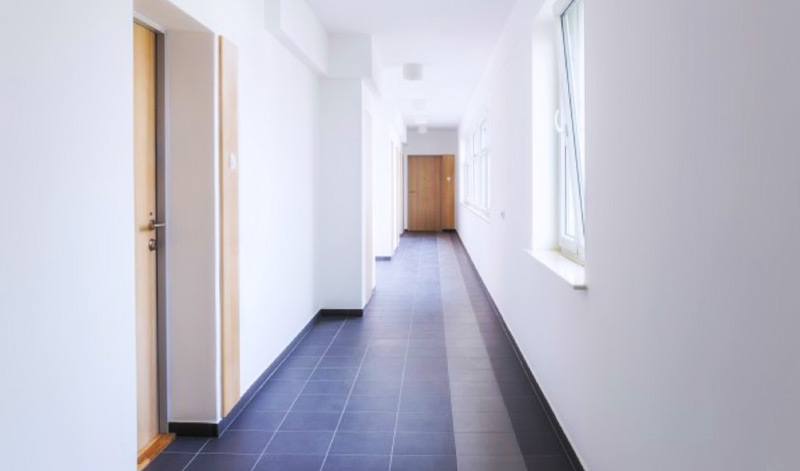
Savings Opportunities for Common Areas
You want to reduce your energy costs but getting tenants to cooperate is challenging. Unfortunately, in many multifamily buildings, energy waste in common areas is all too common. By implementing these simple measures, you can set your common areas apart and reduce your operating budget.
Upgrade lighting
Replace incandescent bulbs, floodlights, exit signs and decorative spot lamps with ENERGY STAR®-certified LED lights. LEDs use 75% less energy than incandescent bulbs and last up to 25 times longer. You’ll save energy and reduce maintenance costs.
Take control
Even the most efficient lights still waste energy illuminating unoccupied spaces. Occupancy or vacancy sensors work well in areas with varying occupancy, such as fitness centers, restrooms and mechanical or storage facilities. Photosensors dim or switch lights on or off in response to daylight. They’re a good choice for parking lots, walkways or indoor areas where a lot of sunlight is available.
Install Wi-Fi thermostats
Programmable thermostats allow you to save energy by automatically adjusting temperatures in common areas during periods of little or no use, such as late at night. Wi-Fi models provide advanced features, such as remote control. You can quickly and easily override or modify the program no matter where you are.
Reduce your energy load
If you have a common laundry area, upgrade to ENERGY STAR®-certified clothes washers and dryers. ENERGY STAR machines are up to 25% more efficient than standard models, and certified washers use a third less water. Post reminders for tenants to wash with full loads, run on cold water whenever possible and clean the dryer lint filter after use.
Lower pool and hot tub temperatures
If you have a swimming pool or hot tub, the water heating costs could be draining your operating budget. Set the pool at 81°F, the temperature recommended by the American Red Cross for recreational swimming. Most suppliers of hot tubs recommend a summer temperature setting a couple degrees lower than our body temperature (98°F) and a winter setting around 102°F. Cover the pool and hot tub during periods of non-use to save energy by reducing evaporation.
Looking to save more? Start by using ENERGY STAR’s Portfolio Manager to compare your properties to those of similar properties nationwide. Use your score to target energy-saving measures and track your performance improvements.